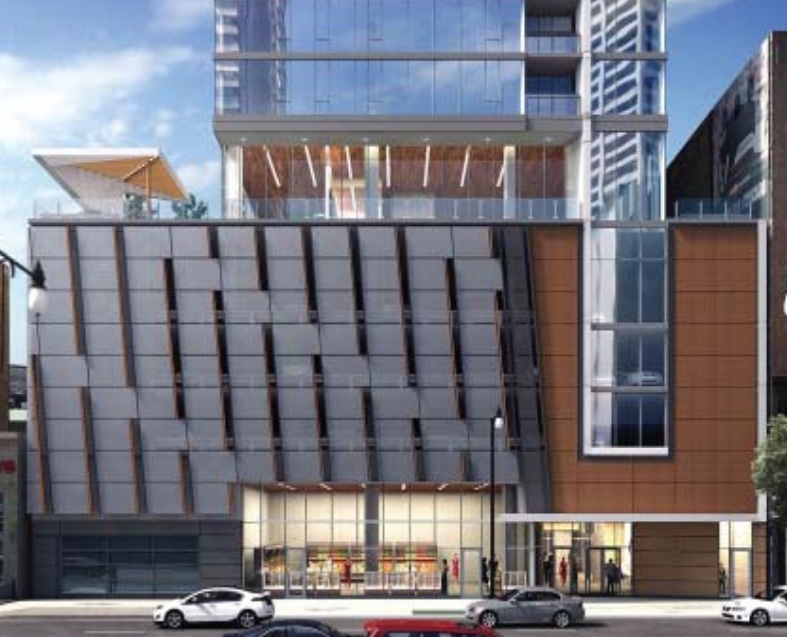I have a few rules of thumb I normally use for judging whether a residential development has an appropriate number of off-street car parking spaces. If a land parcel is a significant distance from a train station and/or close to an expressway entrance, it’s understandable, if somewhat unfortunate, when the developer chooses to include a 1:1 ratio of parking spots to apartment or condo units.
Housing located within a ten-minute walk of a train stop should have no more than a 1:2 ratio of parking spaces to units, although these transit-oriented developments can also be very successful with fewer, or zero, spots for residents. And residential structures that are built close to transit with a higher number of parking spaces than living units represent a major missed opportunity to reduce car-dependency, so I classify these as “anti-TODs.”
But a new high-rise planned for a surface parking lot at 1136 South Wabash, literally next door to the Roosevelt ‘L’ station, has me wondering if I should re-think my standards on what constitutes a transit-oriented development. The 26-story tower, which is a collaboration between developer Keith Giles and CA residential, will feature 320 apartments, mostly studios and one-bedrooms, and 5,000 square feet of first-floor retail. The project, slated for completion in 2018, includes 141 parking spaces housed in a five-story podium.
On the plus side, it’s great that an underused parking lot next to a train station – a terrible waste of land – is being replaced by dense housing with several storefronts worth of commercial space. The location, a stone’s throw from two supermarkets, surrounded by shops, restaurants, cafes, and bars, will make it easy for residents to do many of their daily trips on foot. And, of course, the extreme proximity of the Red, Green, and Orange Lines, as well as several bus routes on Roosevelt and State, will facilitate car-free travel to much of the city.
Unsurprisingly, the developers are playing up the building’s extremely convenient location. In a press release they note that it’s close to the South Loop’s “most popular shopping, dining and entertainment destinations, not to mention it’s just steps from Grant Park, the Museum Campus and Lake Michigan.” They also highlight it’s next to the CTA station and bill the project as a transit-oriented development.
It’s true that they are technically taking advantage of the city’s TOD ordinance. While the old zoning laws generally required a 1:1 ratio of parking spots to units for new residential properties, the ordinance essentially waives the parking requirement for buildings near train stations. With 141 spaces and 320 units, this development will have a bit less than a 1:2 ratio.
But there are a couple aspects of this project that make me question whether it’s truly in the spirit of a TOD, i.e. a development intended to reduce car-dependency. First of all, there’s the five-story parking podium, a throwback to the dubious architectural trends of Chicago’s last residential building boom under Richard M. Daley. The unsightly podium really advertises the presence of dozens and dozens of garage spaces.
Then there’s the question of whether such a high-rise right next door to an ‘L’ station and steps from retail, cultural attractions, and nightlife, and a roughly ten-minute walk from the Loop, really needs to provide a car space for almost every-other tenant.
It’s true that the project is being billed as a luxury development, with high-end furnishing, loads of amenities, and rents starting around $1,500 for a small studio. As such, it’s reasonable to assume that the tenants will be relatively affluent and some of them will want parking spaces.
On the other hand, half of the units are studios, with floor plans as small as 389 square feet. Clearly these studios and micro-apartments are geared toward young adults, and studies shows that millennials are increasingly uninterested in car ownership. As such, I expect that many of those 141 garage spaces will go unoccupied, but the South Loop community will still be stuck with that ugly parking podium.
What’s your opinion – is this a reasonable number of parking spots for the location, or is this project unworthy of the transit-oriented development label?






